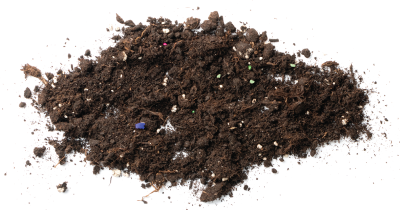
(Toms: Plastics in our farming soils is a ticking time bomb. Microplastics kill plants, kill earthworms and increase the uptake of toxins by plants.)
Researchers say that more microplastics pollution is getting into farm soil than oceans—and these tiny bits are showing up in our fruits, veggies, and bodies.
At the end of the experiment she sent her wheat plants off for analysis, and, validating previous reports, the plants grown with microplastics were more cadmium-contaminated. “The plastics really were acting as the vector for uptake of the cadmium,” she said.
Sixteen days into Kirkham’s microplastics and cadmium experiment, her plastic-treated wheat plants began to yellow and wilt. Water had been pooling on the top of the soil in the plastic treated plants, but to keep her experiment consistent, she had to give all the plants the same amount of water.
“The particulate plastic appeared to clog the soil pores, prevent aeration of the soil, and cause…the roots to die,” said Kirkham. Plants without microplastics, even the cadmium-contaminated ones, were in much better shape. “It was the plastics that were controlling the growth more than the cadmium.”
Esperanza Huerta Lwanga, a soil scientist affiliated with both Wageningen University & Research in the Netherlands and El Colegio de la Frontera Sur in Mexico, has investigated the effects of microplastics on earthworms, creatures widely considered a boon to farming because of their ability to aid decomposition, add organic nutrients to the soil through their waste castings, and increase the aeration of soil.
“When I was doing research on soil invertebrates’ distribution at different home gardens in Tabasco, Mexico, I found microplastics. And in those soils with microplastics, there were not earthworms,” Huerta Lwanga told EHN.
This observation motivated her to study earthworms directly. In her subsequent experiments, she found that worms attempted to avoid microplastics, but when the soil concentration reached 7 percent, they began to ingest them along with the soil, concentrating the plastics in their castings, and transporting them through different layers of soil. In their 2018 paper, Huerta Lwanga’s team cautioned that rainwater flows through earthworm burrows into groundwater, creating a clear conduit for microplastics to enter groundwater systems.
Huerta Lwanga also said that microplastics caused an 8 percent to 25 percent mortality rate in earthworms depending on the dose. In their paper, she and her colleagues hypothesized that mortality may be partly caused by microplastics abrading the digestive tracts of earthworms, making it more difficult for them to absorb nutrients. Damage to the digestive tracts of earthworms that ingested microplastics has been documented by other researchers.
https://www.organicconsumers.org/news/microplastics-in-farm-soils-growing-concern
